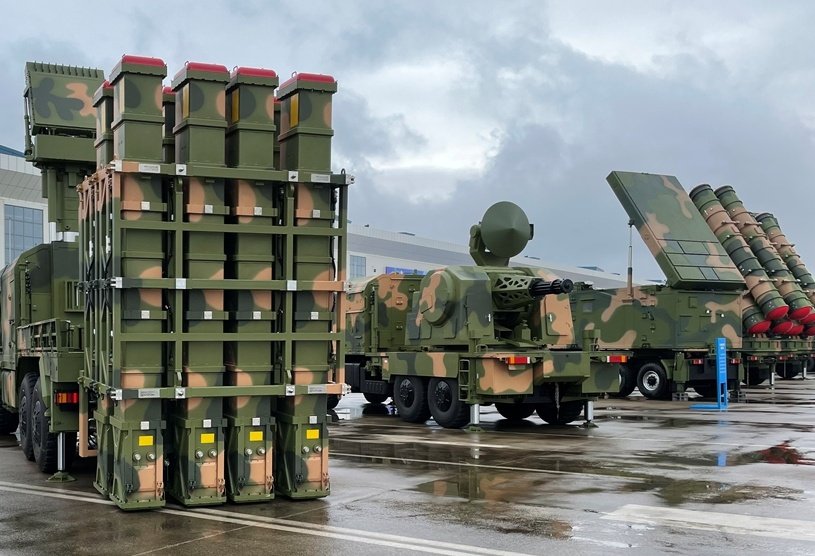Iran has officially received HQ-9B long-range air defense systems from China, boosting its regional capabilities. Here’s how it changes the military balance.
A New Defense Era for Iran
In a development that could significantly alter the geopolitical balance in the Middle East, Iran has officially taken delivery of HQ-9B long-range air defense systems from China. This marks a critical upgrade for Tehran’s defense infrastructure, signaling deeper military ties between China and Iran amid growing tensions with the West.
The HQ-9B system is considered one of the most advanced Chinese-made surface-to-air missile (SAM) systems, boasting radar-guided missiles capable of targeting aircraft, drones, and even some ballistic missiles at distances exceeding 200 kilometers.
Iran’s acquisition of these systems adds a new layer of complexity to regional airspace control, especially given its strategic position near key maritime chokepoints like the Strait of Hormuz.
Why the HQ-9B Matters

The HQ-9B is not just a radar and missile launcher—it’s a comprehensive air defense system built to detect, track, and destroy aerial threats before they reach their targets. The system has often been compared to Russia’s S-300 and even the American Patriot missile defense system, though with different engineering logic.
Iran’s military has long relied on a mix of Russian, indigenous, and North Korean technologies for its air defense grid. While the nation previously acquired Russian S-300PMU-2s, the HQ-9B offers multi-target tracking, electronic countermeasure resistance, and greater operational flexibility. It can cover critical cities, nuclear facilities, military bases, and oil infrastructure across the country.
This becomes even more crucial when we consider that Israeli and U.S. jets have regularly trained for long-distance strike missions—specifically anticipating conflict scenarios with Iran.
Strengthening Sino-Iranian Military Ties
This defense deal is not an isolated event. Over the last five years, China and Iran have deepened their military cooperation, especially after signing a 25-year strategic partnership in 2021. That agreement promised joint military drills, intelligence sharing, and defense technology transfer.
By providing HQ-9B systems, China is not only cementing its influence in Iran but also expanding its defense export market into regions previously dominated by Russian and Western technology.
Beijing’s move is strategic—it gains economic and political leverage in one of the world’s most volatile regions. For Iran, it’s an opportunity to diversify suppliers, reduce reliance on Russia, and benefit from cutting-edge Chinese radar and missile tech.
Implications for the U.S. and Its Allies
The delivery of HQ-9B systems to Iran will undoubtedly raise alarms in Washington, Tel Aviv, and Riyadh.
For the U.S., it means that any air or missile strike option against Iran’s nuclear facilities just became more complicated. American stealth aircraft like the F-35 will now face additional risks, especially during deep-penetration missions.
For Israel, the concern is even more immediate. With Iran positioning air defense systems around nuclear sites and military compounds, pre-emptive strike strategies—something long discussed in Israeli defense circles—may need a complete overhaul.
Meanwhile, Saudi Arabia and the UAE, already cautious about Iranian drone and missile capabilities, will be forced to rethink their air patrol patterns and defense procurement strategies.
HQ-9B vs. Other Global Air Defense Systems
To understand the full weight of this acquisition, it’s important to look at how the HQ-9B stacks up against global systems.
While the HQ-9B may not outperform the S-400 in every aspect, its availability, political flexibility, and cost-effectiveness make it an attractive choice for countries like Iran. It delivers credible deterrence without the international strings attached to American systems or the dependency often linked to Russian support.
Internal Pressure and Military Modernization
This acquisition comes at a time when Iran is facing domestic unrest, economic sanctions, and military containment efforts from regional and Western powers. Therefore, any show of strength—even symbolic—helps the Iranian regime project power and control.
Investing in advanced air defense systems also gives Tehran greater leverage in future negotiations related to the nuclear deal (JCPOA) or sanctions relief. With superior deterrence, Iran is better positioned to negotiate from strength rather than submission.
Moreover, it allows Iran to continue regional power projection via proxies in Lebanon, Syria, and Yemen without fear of easy retaliatory airstrikes on its own soil.
What Comes Next?
The real test will be how Iran integrates the HQ-9B into its existing military architecture. Experts suggest that Iran’s indigenous Bavar-373 system, which was introduced as a domestic alternative to the S-300, may be operated in coordination with the HQ-9B network.
If that integration is successful, Iran could effectively cover large swathes of its airspace with multi-layered defense coverage, making surveillance and strikes far more challenging for adversaries.
Furthermore, there is growing speculation that Iran may attempt to reverse-engineer components from the HQ-9B to boost its domestic missile programs. Iran has a history of learning from foreign tech—examples include North Korean missile assistance in the 2000s and Russian system imitation in the 2010s.
Global Reaction Likely to Follow
We can expect immediate diplomatic reactions from Western capitals. Sanctions may follow, especially if this deal violates U.N. arms embargoes or bilateral agreements. U.S. officials have repeatedly warned China not to strengthen Iran militarily, yet Beijing appears undeterred.
In the coming weeks, regional allies of the U.S. may push for enhanced American and Israeli military presence, particularly around Persian Gulf waters. Drone surveillance, air patrols, and naval drills could be ramped up as a counter-show of strength.
Conclusion
Iran receiving HQ-9B systems from China marks a milestone in modern Middle Eastern military dynamics. It’s a clear statement that Tehran is not isolated—it is finding ways to modernize, re-arm, and prepare for any future escalation, whether diplomatic or kinetic.
For China, this expands its military footprint without directly engaging in conflict. For the U.S. and its allies, it adds another layer of difficulty in dealing with an increasingly fortified Iran.
In short, the sky over Iran is no longer just a zone of surveillance—it’s becoming a shielded stronghold.
